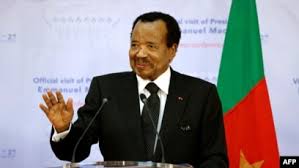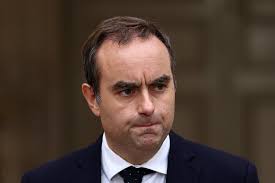Child Sexual Abuse Online Increases By 87% -Report

WeProtect Global Alliance has released its fourth Global Threat Assessment Report, which revealed there has been an 87% increase in reported child sexual abuse material cases since 2019, with over 32 million reports globally (NCMEC).
The findings underscore the pressing need for a coordinated, multi-faceted response to protect the world’s children from this escalating threat.
The report, which provides critical insights into the threats children face online in 2023, also found there has been a 360% increase in self-generated sexual imagery of 7-10-year-olds from 2020 to 2022 (Internet Watch Foundation).
Shockingly, it was also revealed that conversations with children on social gaming platforms can escalate into high-risk grooming situations within 19 seconds, with an average grooming time of just 45 minutes. Social gaming environments that facilitate adult-child intermingling, exchanging virtual gifts and public ranking systems, significantly increase these risks.
The research found a significant rise in financial sexual extortion, with reports of the harm jumping from 139 in 2021 to over 10,000 reports in 2022. This involves perpetrators grooming and manipulating children into sharing sexual images and video of themselves and then extorting them for monetary gain. Many extorters pose as young girls online and predominantly approach boys aged between 15-17 years via social media. This phenomenon has resulted in a string of cases where children have tragically taken their own lives.
New technology is heightening the threats that children face online. Since early 2023, cases of perpetrators also using generative Al to create child sexual abuse material and exploit children have been increasing.
Thorn found that while less than 1% of child sexual abuse material files shared in a sample of offender communities are currently photorealistic computer-generated imagery (CGI) of child sexual abuse, the volume has increased consistently since August 2022.
Last month, Australia, in a global first, put in place measures that require big tech companies to take steps to ensure AI products cannot be used to generate deepfake images and video of child sexual abuse.
Speaking on the report, the Executive Director of WeProtect Global Alliance, Iain Drennan said, “Our latest report shows the scale of the threat children face online. Online-facilitated child sexual exploitation and abuse worldwide demands our attention and action right now. New technological capabilities further exacerbate existing risks, and the situation is no different in Africa. Children’s safety must be non-negotiable. To prevent more children from coming to harm, governments, online service providers, charities and companies must step up their efforts and work together to drive change and protect children.”
Also speaking, the Program Coordinator, ACSAI Nigeria, Juliet Ohahuru-Obiora said, “Children cannot consent, which is why we have ceased using the term “child pornography” and now refer to it as “child sexual abuse material.” “Reports on child sexual abuse material are increasing exponentially, we must ensure inclusivity to safeguard every child, irrespective of race, ethnicity, sexual orientation, or disability.
“Tech platforms must be held accountable in ensuring “safety by design” that is inclusive for children to combat the emerging trends of online child sexual exploitation and abuse. Children must be actively involved in interventions designed for their well-being, thus helping them to identify and address gaps to ensure greater impact. Harmonizing global legislation strengthens cross-border prosecution of online child sexual exploitation and abuse, leaving no safe haven for perpetrators.”
Turning the tide on current abuse trends will only be possible with increased prioritisation and commitment from all stakeholders involved in the response, empowered and enabled by maturing legislation. To fight back, all stakeholders, including governments, online service providers, civil society organisations, and responders, are urged to invest in Public Health approaches and others.
The Brave Movement, Africa Campaign Manager, Kanga Rasi, said, “We are living in a world where every child, including survivors like myself, who has internet access faces the threat of sexual violence, exploitation, and abuse. While technology has the potential to bring about positive change, we must not tolerate the presence of sexual predators on digital platforms, endangering our children and survivors subjecting them to lifelong trauma. Child sexual violence online is an urgent global crisis that transcends boundaries and necessitates a united global response.”
Karen Hollely, Co-Founder and Chief Operating Officer, The Child Witness Institute said, “The WeProtect Global Threat Assessment Report provides ongoing insight into the global response to online child sexual exploitation and abuse. There is considerable work being done to address this issue, and it is because of these reports that programmatic efforts are being made in many countries and, importantly, by many children. Despite this work, however, we are all still racing against time to find the best possible ways to prevent children from being exploited, abused, misinformed and misguided online.
One outcome of this work is the growing evidence that children who have strong relationships with their parents or other caregivers, where communication is open and welcomed, fare better than those children who don’t. None of us will ever have a full and complete understanding of the vast capabilities of the internet, but if we can sit down and talk about it with our children, we have a better chance of providing them and ourselves with the skills to navigate it safely and positively.”
Speaking, the UNICEF Director of Child Protection and WeProtect Global Alliance Policy Board Member, Sheema Sen Gupta said, “The swift advancement of technology is straining child protection and justice systems, which in many countries are already stretched thin. We urgently need to focus on large-scale prevention – this requires governments to invest in evidence-based interventions to protect children from sexual violence and for companies to adopt child-rights-by-design principles when developing digital products and services to prevent potential harm. We also need strong legislation to protect children from all forms of online child sexual exploitation, future-proofed against rapidly evolving technologies.”
The Director-General of the Cyber Security Authority of Ghana, Dr. Albert Antwi-Boasiako, said, “The growing use of new technologies including AI-based technologies by perpetrators of online child sexual abuse is concerning to the well-being of children in this digital age. The We Protect Global Threat Assessment has therefore become an essential tool to assist governments safeguard children online. It provides the Cyber Security Authority with the right insights needed to stay ahead of the curve and to protect our children from the latest threats in online child sexual abuse through the implementation of relevant measures and policy responses, working in collaboration with both our domestic and international partners”.






